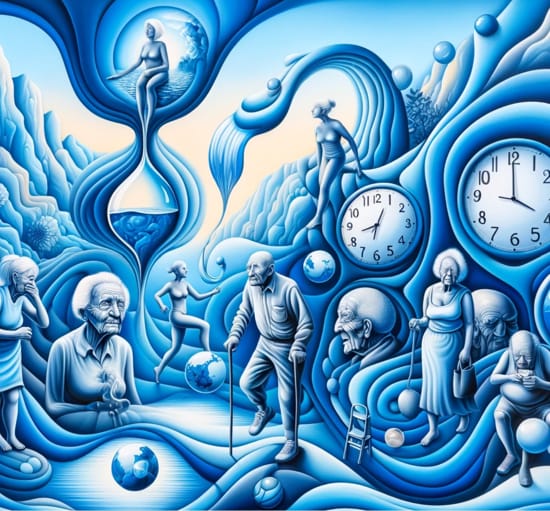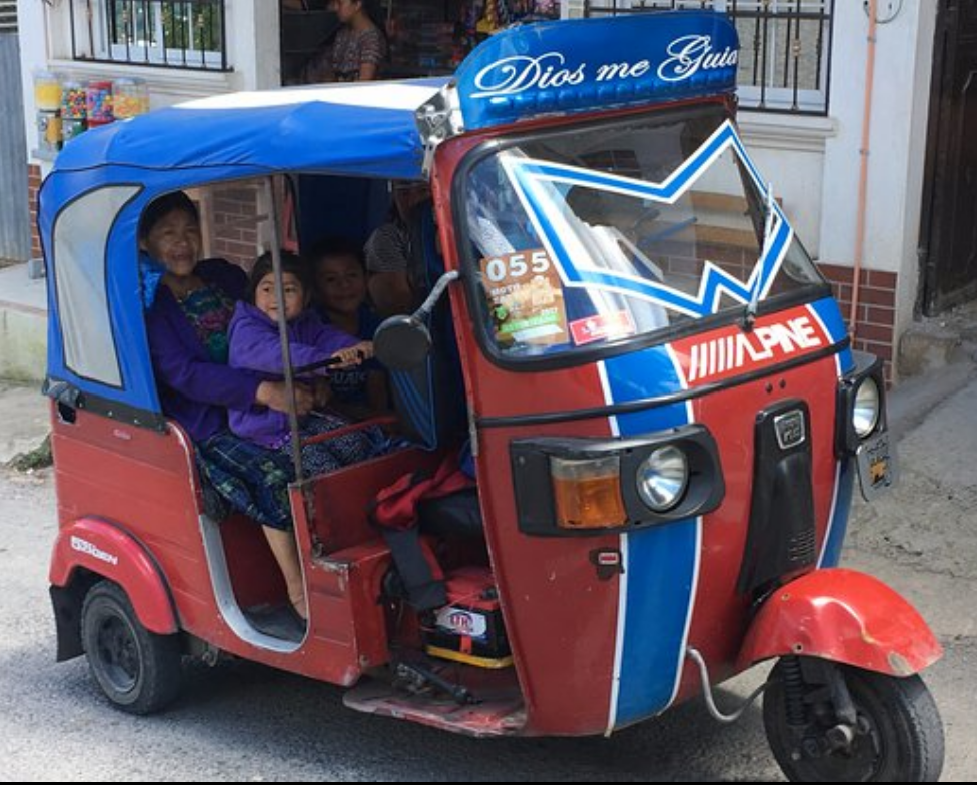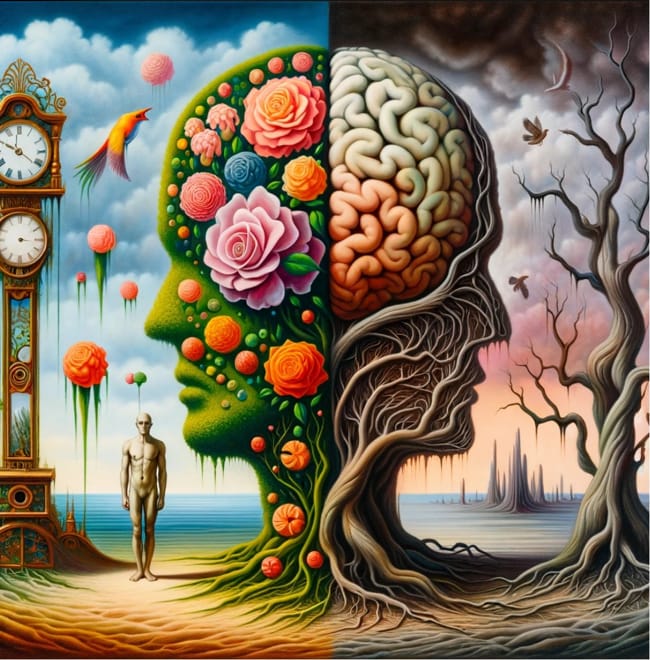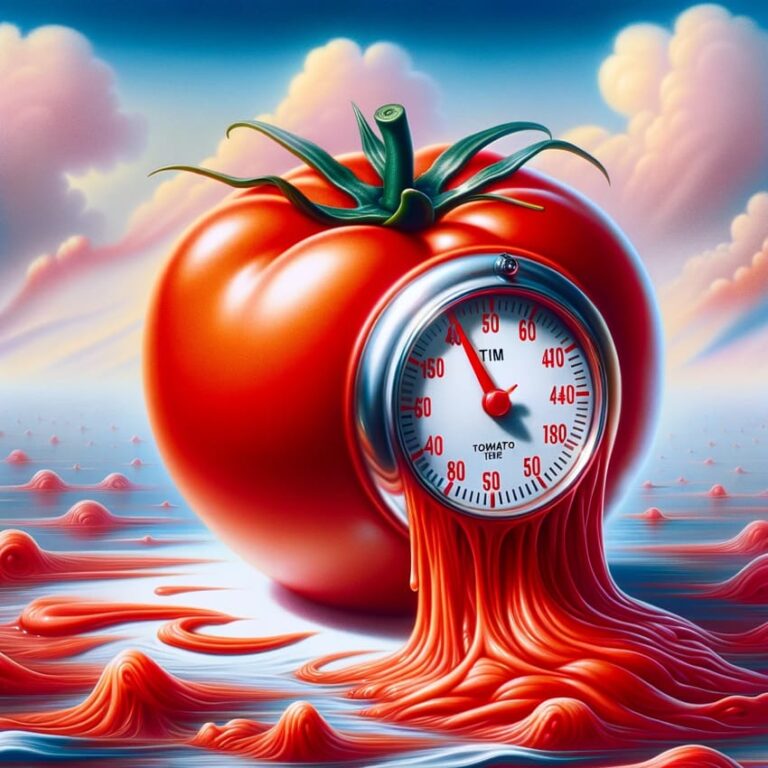the Blue zone cheat sheet
What if I told you there are places where being a centenarian is common? These are places where people live longer and have a higher quality of life in their later years, which is far better than the global average. These remarkable regions are known as Blue Zones and have captured the world’s attention for a good reason. The Blue Zones concept was initially researched and developed by Dan Buettner. He is a National Geographic explorer, author, and researcher who studies longevity and the places around the world where people live extraordinarily long lives. This blue zone cheat sheet is a guide to quickly bringing the blue zone cheat sheet into your life.
Why Are Blue Zones Called Blue Zones.
Research into these pockets of longevity began when demographic work highlighted areas with unusually high concentrations of people living past 100. These areas were marked with a blue pen, hence the name ‘Blue Zone.’ This script isn’t just a fleeting narrative; it’s based on rigorously collected data and meticulous scientific studies that verify the exceptional health and lifespan of these populations.

Blue zones Are a Tangible Blueprint for a healthier life
The world is increasingly interested in Blue Zones because they offer tangible blueprints for healthier and happier lives. Against the backdrop of modern health crises and a growing global population, these areas shine a light on time-tested lifestyle habits that stand out in stark contrast to today’s fast-paced, high-stress lifestyle. If living a longer, healthier life is your goal, understanding and applying the secrets of Blue Zones is one of the most practical steps you can take.
“Blue is the closest color to truth.”
Steven Tyler
The Blueprint of the Blue Zone: Understanding What It Is and Its Importance
When I say ‘Blue Zone,’ I’m referring to the phenomenon where specific communities worldwide have had a higher than average number of residents living in the past 100 years. These aren’t just individuals who reach a remarkable age; they live their extra years with vigor, health, and happiness.
The importance of Blue Zone principles lies in their potential to transform our approach to health. In an era when chronic diseases are prevalent, the Blue Zone offers alternative, evidence-backed avenues for disease prevention. It’s important because it’s not just about adding years to life, but life to years. These lifestyle adjustments have the power to reduce instances of heart disease, obesity, cancer, and diabetes.
In short, Blue Zones encapsulate a holistic approach to longevity that defies the cliched ‘fountain of youth.’ It’s a blend of diet, activity, and social interaction that holds lessons for everyone. I’ll unravel each of these elements as we explore further the habits and traditions that make these zones unique.
World’s Wellsprings of Wellness: A Snapshot of Blue Zone Regions.
Blue Zones aren’t just theoretical ideals; they are real-world locations where people live exceptionally long lives. There are five recognized Blue Zones: Ikaria in Greece, Okinawa in Japan, Sardinia in Italy, Nicoya in Costa Rica, and Loma Linda in California.
Each region has its unique culture, diet, and way of life, yet they share common themes contributing to their residents’ longevity. In Ikaria, for example, a combination of a Mediterranean diet rich in olive oil, legumes, and vegetables and hillside living that encourages physical activity plays a key role. Okinawans consume a diet high in green and yellow vegetables and tofu, often living by the ‘hara hachi bu’ principle – eating until they are 80% full. Sardinia is known for an active shepherding lifestyle and a diet with plenty of beans and whole-grain bread. Nicoya’s focus on strong family ties and a diet rich in fruits like the Marañón apple, a cashew apple, exemplifies their approach. In Loma Linda, a community of Seventh-day Adventists stands out for their practice of Sabbath, a day of rest, along with a vegetarian diet.
Despite the differences in landscape, climate, and customs, these regions demonstrate the impact of diet, physical activity, family and social engagement, and stress management on health and longevity. Understanding these commonalities can help us adapt the Blue Zone essence to our diverse lives.
The Blue Zone Diet Demystified: Nourish to Flourish
You may have heard that diet plays a pivotal role in the remarkable longevity of people in the Blue Zones. The locals don’t just eat food; they consume a rich tapestry of nutrients that fortify their bodies. Plant-based diets reign supreme in these regions, heavily emphasizing beans, whole grains, fruits, vegetables, nuts, and seeds.
The contrast between a Blue Zone diet and a typical Western diet couldn’t be starker. Where the latter often pivots around processed foods, red meat, and high sugar intake, the former favors whole, unprocessed foods that are low in sugar, high in fiber, and chock-full of antioxidants. These dietary choices directly correlate with reduced incidences of chronic diseases such as heart disease, obesity, cancer, and diabetes—diseases that frequently occur in industrialized nations.
Bridge the Gap to the blue zone
To bridge the gap between current eating habits and those of the Blue Zones, start small. Swap out that bag of chips for a handful of nuts. Trade the white rice for quinoa or barley. Opt for fruit instead of sugary desserts. The key is to gradually shift the balance from processed to unprocessed, appreciating natural flavors along the way.
What’s more, portion control is practiced naturally in the Blue Zones. Meals are social, but not overindulgent. By following hunger and satiety signals rather than eating mindlessly, we can recalibrate our approach to food consumption–a crucial step towards mimicking Blue Zone diets.
Harmony in Habits: The Role of Daily Routines and Social Structures
Imagine walking through a small village where every day is marked by a gentle, predictable rhythm. Watch as shops swing open their doors and later close them at the same unvarying times. Join in communal meals, a time of joy and togetherness. Witness how the villagers balance work with rest, each task flowing seamlessly into periods of leisure.
In these havens of longevity, natural routines effortlessly foster health, sidestepping the need for rigid schedules or self-denial. People regularly enjoy meals with family or neighbors, turning dining into a communal celebration. Work naturally incorporates physical activity, perceived not as a burdensome chore but as an integral part of everyday life. This consistency in daily routines does more than just bolster physical health; it also nurtures emotional stability.
connectivity is key in the Blue Zones
The fabric of Blue Zone societies is woven with strong community threads. This connection is no coincidence; studies show social connections can help reduce stress, improve mental health, and increase lifespan. In Blue Zone communities, people don’t just know their neighbors. They rely on them. This sense of interdependence fosters an environment where people are cared for through all stages of life.
Embracing aspects of this lifestyle doesn’t require moving to a Blue Zone. I can introduce elements of these routines and social structures into my life by prioritizing communal dining, engaging in pleasant physical activities, or creating regular check-ins with friends and family. The key is consistency and the cultivation of meaningful relationships.
Blue Zones prove that our environments, habits, and social networks profoundly influence our health. By mirroring these elements, I increase the likelihood of a longer life and a richer, more connected one. As we segue into the natural movement of Blue Zones, let’s consider how effortlessly activity is woven into their days.
Moving Naturally: From Exercise to Lifestyle Integration.
If I’ve learned one thing from studying the lifestyles of those who live in the Blue Zones, it’s that intentional, hard-core workouts aren’t the secret sauce to their impressive longevity. Instead, it’s the seamless integration of movement into their daily lives. These individuals don’t run on treadmills; they walk to the market, tend to their gardens, and visit friends–all on foot.
When I contrast this with our modern lifestyle, the differences are stark. Many of us grapple with sedentary jobs, relying on cars for short trips and elevators for a single flight of stairs. It’s no surprise that integrating exercise can feel like a chore when it’s detached from our regular routines.
Adopting Blue Zone strategies means rethinking how we approach physical activity. We must look beyond the scheduled gym sessions and envision a lifestyle where movement is a natural part of our day. It can be as simple as cycling to work, taking the stairs, or planting a vegetable garden to encourage daily upkeep.
Now, I’m not suggesting a complete overhaul of your life overnight. Start small. Maybe it’s walking to the nearby store instead of driving or playing with your kids at the park. Such simple shifts can move a natural, enjoyable part of your life rather than an isolated event that requires significant time and effort.
Ease and enjoyment in daily movement set the stage for a clear, focused mind–which we’ll look into next. The serenity of a mind unburdened by constant stress is another secret to the vitality observed in Blue Zone populations.
Cultivating the Blue Zone Mindset: Stress Reduction and Purpose.
Inhabiting the calm serenity that defines Blue Zone populations requires a particular state of mind. Stress, a known health adversary, is radically less prevalent in these regions. It’s not that Blue Zone residents don’t face stress; their strategies for managing it are what set them apart.
Take, for example, the practice of ‘downshifting.’ In Okinawa, Japan, it might involve moments of mindfulness called ‘Yuimaru’ or connecting with the community. Sardinians might pause for a daily glass of wine with friends. These rituals provide structured moments of relief, a breathing space in their everyday bustle.
Moreover, having a purpose in life is a fundamental trait among the oldest living people. The Okinawan term ‘Ikigai’ and the Nicoyan’ plan de Vida translate to ‘reason for being’ and are intrinsic to their lives from the moment they rise.
This psychological resilience is tied not just to happiness but also to longevity. Culturing tranquility and direction in your life can boost longevity-promoting hormones and improve immune function. As scientists probe deeper, the mechanisms linking purpose-driven living to health become clearer.
Now consider how this may flow into fostering community. Strong social ties might be the chicken soup for the soul, with ample evidence pointing to its nourishing effects on longevity and wellbeing. Let’s explore the synergy between mindset and community in the next section.
The Power of Community: Fostering Strong Relationships and Engagement
In the heart of every Blue Zone lies a web of strong communal ties that play a vital role in longevity. These ties provide both practical support and emotional sustenance, which contribute materially to the health and happiness of individuals in these regions.
Building lasting relationships is not just a hallmark of these communities; it is a key aspect of their way of life. Engagement with family, friends, and neighbors creates a mutual support network that helps manage stress, encourages healthy behaviors, and reinforces a sense of belonging and purpose.
I can’t overstate the benefit of participating in community events and local gatherings. Being involved with others in such activities not only helps with feeling connected but also often leads to adopting healthier lifestyle habits through collective influence.
Studies have shown that people with strong social connections tend to live longer, more satisfying lives. The support networks in Blue Zone regions are powerful allies against depression and loneliness and stand as a testament to the power of relying on one another.
For those of us not living in Blue Zones, it’s still possible to foster these robust social networks. Start by reaching out more often to family and friends. Volunteer, join clubs, or frequent local community centers. If these aren’t available, consider starting a group centered around a common interest or goal.
What’s more, nurturing these relationships should be viewed not as a task, but a joyous part of everyday life. In the Blue Zones, this sense of community is seamlessly integrated into daily living—it’s a natural extension of being rather than an added effort.
Your Blue Zone Cheat Sheet: Practical Takeaways for Everyday Life.
1.Reassess your diet. Firstly, take an honest look at what you eat each day. Ask yourself: Are veggies taking center stage? Are sweets a rare treat? If not, now’s the time for an upgrade. Then, gradually shift toward more plants, whole grains, nuts, seeds, and beans. Finally, let the longevity powerhouses seen in Blue Zones guide your choices.
2. Get moving, but skip the stale gym routine. Find natural, enjoyable ways to incorporate more activity into your normal daily routine rather than forcing yourself into a structured exercise regimen that is hard to maintain long-term. For example, walk or cycle whenever you need to run errands or commute short distances, even if driving would be faster.
Opt for the stairs over the elevator or escalator, even if it’s multiple flights. Take regular movement breaks when working or relaxing—march in place, do some light yoga stretches, anything to get your body moving. Consider starting a garden, which requires physical exertion like digging, planting, weeding, and hauling soil and compost.
The key is integrating motion into ordinary tasks instead of trying to fit the gym into an already packed schedule. This helps underscore that physical activity is essential in life, much like our spry friends living in longevity hotspots around the world. The more you can make being on your feet and working your muscles a natural part of your routine versus a chore, the more success you’ll have sustaining this habit long-term.
.3. Slow down. Seriously slow down and give yourself permission to regularly relax. In our busy modern lives, stress often becomes a silent saboteur, subtly damaging our health. Yet making time to consciously decompress is key.
Carve out periods each day when you prioritize calming activities, even if just taking a few deep breaths. Try meditating, sitting quietly outdoors immersed in nature, slowly stretching while focusing on your body, or doing an unrushed yoga routine.
To begin, unplug technology and avoid stimulation. This allows your mind and body time to reset tension levels so stress doesn’t accumulate. Remember, don’t feel guilty about scheduling this as an appointment with yourself. Consider it as a necessary break that will ultimately make you more productive in both work and leisure. Additionally, if possible, build this into activities you already do such as taking a bath, walking the dog, or cooking dinner. For instance, leave early to stroll to the market without rushing. Make it a habit to intentionally shift gears more often so you remember that the fast-paced, stressful way society pushes us to live isn’t healthy long-term. Finally, make relaxation a normal part of your days.
4. Nurture your social circles. Invest time in family and friends. A heart-to-heart talk can be just as important as a heart healthy meal. Prioritize spending meaningful, unhurried time with your loved ones as an essential piece of wellbeing, not a bonus if you have spare moments.Give the gift of your presence and supportive ear versus just material things.
Taking these steps doesn’t guarantee you’ll hit a century, but they’re proven patterns that promote a longer, more vibrant existence. Start small, stay consistent, and most importantly, enjoy the journey to a more fulfilled you.
my Experience of transitioning to a Blue Zone way of life.
First of all I wanted to leave Europe that was a priority. Secondly I wanted to find a place to live that would sustain me for the next few years, as the world gets more and more dystopian. I left Europe in 2021 in January and after traveling all over Centrel America I settled in Lake atitlan Guatemala.
Why Lake Atitilan?
In San Juan De La Laguna, I immerse myself in the world of the Ztutujil, a Mayan tribe deeply rooted in their land. They cultivate their food in the rich, fertile black volcanic soil, a testament to their harmony with the earth. From my window, the view captivates me – a stunning lake stretches out before the hotel, flanked by two majestic mountains on one side and two towering volcanoes on the other. Nature’s embrace is undeniable here, wrapping me in its vivid tapestry.
Secondly, they have welcomed me with open arms into their lives and community. The Tzutujil have allowed me to witness their grief and share their joys. I have been to their Mayan ceremonies, their weddings and their funerals. The Community is one of the poorest in the world as regards fiscal riches, but one of the richest in terms of love life and laughter. All day ever day I hear the marimba their national instrument and the sound of helpless laughter. They laugh until they cry here and that is catching.
Next year I am seventy years of age, and this lifestyle has given me a sens of purpose and I am needed. I can contribute to the community and also have to walk up the side of a mountain every day to fgo to the market. I get my exercise and don’t have cars near me. The mountainside is too steep, the only vehicles are the Asian three wheeled tuktuks.

I now live within a close-knit community, warmly embraced since my arrival. The hotel I chose turned out to be a blessing. Here, over ninety percent of the guests actively participate in shopping and cooking. We exchange anecdotes and life stories, creating a tapestry of shared experiences. Among us are five children, their ages ranging from three to thirteen, seamlessly blending with all generations in daily interactions.
The allure of a fountain of youth may endure through the ages, but the promise of Blue Zones delivers something more profound—a life of purpose, vibrancy, and meaning. These remarkable regions where centenarians thrive don’t rely on gimmicks or quick fixes; their vitality emerges from cultural strands woven over generations. Strands that resonate with all that enables genuine well being: community, moderation, celebration of nature’s bounty, togetherness balanced with solitude.
The secrets from Blue Zone regions unveil simple yet enlightened ways of being that benefit young and old alike. We don’t need an instruction manual listing 100 ways to boost our lifespan. At best that overwhelms, at worst it’s reductionist. What we need is to reflect on how we spend our days and who we spend them with. Allow Blue Zone wisdom to shape not drastic alterations but gradual realignments. Lean into a plant based diet, reveling in purpose, taking time to unwind, fostering meaningful bonds that support growth. Soon these choices become second nature rather than chores on wellbeing checklists.
References
- Slavich GM, Irwin MR. From stress to inflammation and major depressive disorder: a social signal transduction theory of depression. Psychol Bull. 2014;140(3):774-815.
- Roy B, Diez-Roux AV, Seeman T, Ranjit N, Shea S, Cushman M. Association of optimism and pessimism with inflammation and hemostasis in the Multi-Ethnic Study of Atherosclerosis (MESA). Psychosom Med. 2010;72(2):134-140.
- Kelloniemi H, Ek E, Laitinen J. Optimism, dietary habits, body mass index and smoking among young Finnish adults. Appetite. 2005;45(2):169-176.
- Shepperd JA, Maroto JJ, Pbert LA. Dispositional optimism as a predictor of health changes among cardiac patients. J Res Pers. 1996;30(4):517-534.
- Boehm JK, Kubzansky LD. The heart’s content: the association between positive psychological well-being and cardiovascular health. Psychol Bull. 2012;138(4):655-691.
The Blue Zone Faq’s





Your article is awesome! I’ve recently watched the same program on National Geographic that talked about the Blue Zones and I was intrigued by the facts presented in the show that I wanted to implement those facts into my own life. Although I’m in the city, I don’t have to move to the Blue Zone, but I can incorporate what you have listed: the plant based diet, move more, and socialize with others more. It is wonderful that you are living far away from the city. I do agree and do plan to utilized steps within your article. It is fascinating. We all should incorporate these steps into our lives daily! Love your article!
Thank you Cydney, if I have inspired one person to improve the quality of their life by adapting the blue zone cheatsheet, then my work is done. Thank you for leaving such a lovely comment it is appreciatted
What an insightful article this is, Catherine.
I totally agree with each and every point in the cheat sheet, and I’m a big fan of your advocacy of gradual rather than abrupt change.
Whenever I try to assess whether something is a good choice in terms of health, I always try to compare with the “standard human life”. I ask myself: Is this something a human naturally does?
Blue zone regions seem to exemplify that “standard” of mine with dazzling clarity. No wonder people generally live longer lives there.
I hear you, Yusuf. Their standard is simplicity and clarity and community for a long healthy life. Thank you so much for your comment